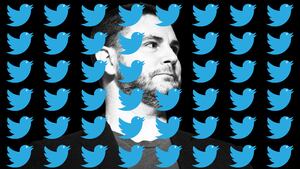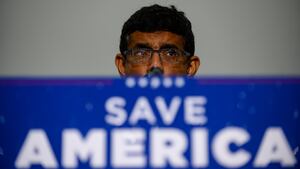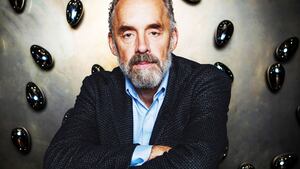It’s been five years since neo-Nazis assembled on Charlottesville, Virginia, for their deadly “Unite the Right” rally. That means it’s also been five years since then-President Donald Trump said that there were “very fine people” on both sides of the conflict that weekend—which is to say, neo-Nazis and their allies on one side, and everyone else on the other.
“But, wait!” said the galaxy-brain contrarian. “Trump ACKSHUALLY condemned the neo-Nazis in plain English! He was referring to the other people, the regular folk that were there to protest the removal of a Robert E. Lee statue.”
This contortion of reality has been cemented in the minds of both MAGA partisans and many anti-woke heterodox commentators, who willfully ignore mounds of context in order to make Trump’s words sound benign.
The right-wing YouTube channel PragerU ran a video called “The Charlottesville Lie,” (which was retweeted by Trump), and another one titled “The Media’s ‘Very Fine People’ Myth.” The Trump-supporting Dilbert guy, Scott Adams, pushed it repeatedly on Fox News and to his own audiences on social media and YouTube. Right-wing provocateur Candace Owens put in her disinformation efforts, too. Trump’s 2020 campaign made a huge issue out of it. Fox News host Greg Gutfeld went from condemning Trump’s post-Charlottesville statement in 2017 to saying in 2020 that the “very fine people” outrage is a “hoax” that’s been “debunked.”
Even Sam Harris, a Trump-loathing social liberal, has repeated the “Very Fine People Was a Media-Created Hoax” trope both on his own podcast and others.

Donald Trump fields questions from reporters about his comments on the events in Charlottesville, Virginia, and white supremacists on Aug. 15, 2017.
Photo Illustration by Elizabeth Brockway/The Daily Beast/GettyThey all insist that the transcript of Trump’s full comments to the press on Aug. 15, 2017, proves he repeatedly condemned neo-Nazis, just as he had the day before when he said they should be rejected, right alongside antifa (or as he put it, the “alt-left”). The “very fine people” he was referring to, they say, were the peaceful protesters demonstrating against the proposal to remove a statue of Confederate General Robert E. Lee from Market Street Park.
In short, the Very Fine People-truthers insist, Trump awkwardly put the blame for the weekend’s deadly violence “on many sides,” but he condemned the Nazis, so leave him alone.
Here’s the problem: There’s essentially no evidence whatsoever that anyone was there that weekend as part of a totally-not-racist Southern heritage pro-Robert E. Lee “just plain folks” brigade.
Despite Trump’s insistence that the people who organized the event “didn’t put themselves down as neo-Nazis,” the weekend had been heavily promoted as an alt-right event, loaded with overt Nazi imagery. Beyond just their advertisements, words, and deeds, there were months of highly publicized legal machinations between the city and the white supremacist organizers of the “Unite the Right” rally.

A man makes a slashing motion across his throat toward counter-protesters as he marches with other white nationalists, neo-Nazis, and members of the “alt-right” during the “Unite the Right” rally Aug. 12, 2017, in Charlottesville, Virginia.
Photo Illustration by Elizabeth Brockway/The Daily Beast/GettyThe organizers made it very clear that this was a gathering of racist, antisemitic, neo-fascist groups. The issue of the statute was incidental, and it’s barely mentioned in the rally’s advertisements (when it was mentioned at all.)
Now, if you want to completely bend over backward and play devil’s advocate to a degree that’s both infantilizing and disingenuous, you could make these hypothetical arguments:
1.) Trump is almost always incoherent, and it’s unfair cherry-picking to take the words of the most powerful person in the world literally.
2.) There were “very fine people” marching in common cause with overt Nazis at an event openly promoted as a Nazi event, but that doesn’t make them Nazis or even Nazi-sympathetic—what are you doing, “GUILT BY ASSOCIATION”???
3.) Maybe Trump was confusing the neo-Nazis involved in Saturday’s bloodshed with the “peaceful” pro-statue protesters of the night before? (You know, the ones carrying tiki torches while chanting “Blood and soil” and “Jews will not replace us.”)
4.) His confusion is immaterial. He made it very clear who *he thought* he was excluding in his “fine people” remarks (whether or not those people actually exist).
Actually, that last one isn’t hypothetical. It’s a direct quote of Sam Harris’ tweet—in which supposed nuance manifests as desperate obfuscation.
So is there any evidence, at all, of pro-Lee statue protesters in Charlottesville that weekend who weren’t overt neo-Nazis, fascists, or any other flavor of right-wing extremist?
PragerU’s video, viewed many millions of times on YouTube, Twitter, and Facebook, quotes a single source from a New York Times article—a woman who says she came with a “conservative” group to protest the removal of the statue but had no common cause with the Nazis.
This woman, the Times neglected to report, was actually part of the “American Warrior Revolution,” a paramilitary group that came to Charlottesville armed to the teeth to act as “peacekeepers,” but only in service of the Nazis. In an interview with a pro-Trump site (one with presumably far less resources than The New York Times), the woman admitted her group wanted to “talk to Antifa and Black Lives Matter and let them know that the way they were protesting is the wrong way to go about it.”
It is also, frankly, total horseshit to blame the outrage over Trump’s “very fine people” comments as some kind of “liberal media” concoction. Condemning Nazis, without equivocation, is the easiest layup of all time—and Trump couldn’t do it. He had to create “very fine people” in order to muddy the waters of accountability.
For the record, I don’t actually believe Trump is pro-Nazi. However, I do believe that like many on the right, he’s far more bothered by “cancel culture” and “antifa” and "Marxists" than he is by Nazis—which the MAGA right considers to be a statistically insignificant anomaly and not the apotheosis of an intolerant, illiberal, and bigoted movement Trump has inspired (alt-right leader Richard Spencer was certainly inspired by the MAGA movement).

White nationalist Richard Spencer and his supporters clash with Virginia state police in Emancipation Park after the “Unite the Right” rally was declared an unlawful gathering Aug. 12, 2017, in Charlottesville, Virginia.
Photo Illustration by Elizabeth Brockway/The Daily Beast/GettyAs Tim Murphy wrote in Mother Jones: “There was a reason David Duke immediately thanked Trump for his ‘honesty & courage’ afterwards. There’s a reason why so many Republicans who have otherwise had Trump’s back felt compelled to criticize him then. Trump ‘messed up,’ said then-House Speaker Paul Ryan. Senate Majority Leader Mitch McConnell issued a statement saying ‘there are no good neo-Nazis.’ Sen. Tim Scott (R-S.C.) visited the White House to explain to the president why Trump’s comments were ‘painful.’”
Even the stalwart Trump bootlicker Sen. Lindsey Graham said the speech made white nationalists and other extremists “believe Mr. Trump is sympathetic to their cause.”
Are all of these Trump loyalists and Republican bigwigs secret MSNBC-watching liberal Hillary-bots? Or were they responding to what transpired in plain sight?
At best, the “very fine people” that existed in Trump’s imagination would have been marching alongside a host of obvious scumbags—those that were carrying Confederate flags and assorted Nazi and fashy swag—screaming about world-controlling Jews and threatening violence.
If you march in public in common cause with actual Nazis, because you love that Robert E. Lee statue so gosh-darn much, are you really a very fine person?

Workers remove a statue of Confederate General Robert E. Lee from Market Street Park on July 10, 2021, in Charlottesville, Virginia.
Photo Illustration by Elizabeth Brockway/The Daily Beast/GettyGenerously, you’d be called a “Nazi sympathizer,” though “Nazi ally” would be more accurate. Regardless, you’d have chosen the side of some of the world’s most disgusting people, all to protect a monument to a traitor and a loser.
There’s not a word about such “very fine people” in the almost-200 page independent report on that awful weekend in August 2017. And Robert Tracinski, a conservative writer for The Bulwark, wrote: “I live in the Charlottesville area, and I know very fine people who oppose the removal of the monuments based on high-minded notions about preserving history. I’m one of them. So I know that we weren’t there that night. Only the white nationalists were there.”
Tracinski added: “What really gives the game away is when Trump insists that the ‘very fine people’ who were there to protest ‘had a permit.’ There was only one protest permit issued that weekend, and it was well documented because there was a court battle over it.”
Crediting Trump for condemning the neo-Nazis, while excusing every other lie he said in that fateful post-Charlottesville press conference, is not dissimilar to the tortured argument that while Trump incited a violent mob to sack the Capitol on Jan. 6, he did say they should march “peacefully”—therefore he can’t be blamed for what transpired.
Trump needed to believe there were “very fine people” there, just as he needed to add a false level of nuance to a situation which had none. To present his comments as non-scandalous—and merely a liberal media creation—is gaslighting. It’s a shameful lie.









